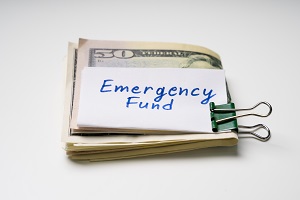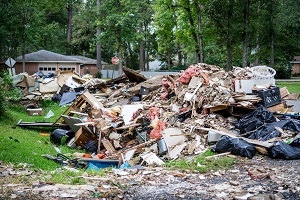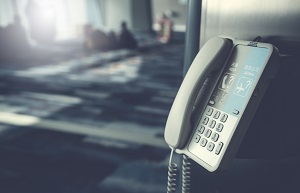No one really wants to think about emergency situations and their consequences. Unfortunately, bad things, including natural disasters like tornadoes or severe thunderstorms, happen when we least expect them. For this reason, your board should always have an HOA emergency plan in place in case disaster strikes. Here is how you can craft the perfect HOA emergency plan for your community.
Creating an HOA Emergency Plan for Your Community
It is easy to go into panic mode when a disaster hits. While it is understandable to be anxious about such emergencies, it should not be your only response, especially in the context of a homeowners association. As a member of your HOA board, it is part of your duty to make sure all residents are safe in the event of a disaster.
The task is easier said than done, with most HOA boards not even knowing where to begin when it comes to emergency preparedness. This is where an HOA emergency plan comes into play.
So, what is an emergency plan anyway? To put it simply, an emergency plan or disaster plan for your HOA is a guide specifying the exact procedures for managing and handling emergency situations. Some HOAs may also refer to it as an emergency response plan or an emergency action plan.
Roles and Responsibilities of an HOA
 A community disaster preparedness plan should be created ahead of time. Allow your HOA board ample time and resources to plan every detail, and do not sit around waiting for an emergency to take place before you act.
A community disaster preparedness plan should be created ahead of time. Allow your HOA board ample time and resources to plan every detail, and do not sit around waiting for an emergency to take place before you act.
An association is responsible for the well-being of a community, which includes its residents. Here are some of the things your HOA must prepare for prior to, during, and following an emergency:
-
- Identify Potential Threats. Your HOA board must pinpoint all potential emergencies that may impact your community, no matter how absurd. If there is a chance such an emergency will happen, take it into consideration.
-
- Construct an HOA Emergency Plan. The next step is to craft an emergency plan for the potential emergencies you have identified.
-
- Minimize Damage and Disruption. Another responsibility that falls on your board’s shoulders is to minimize the risk of damage and disruption. Construct a plan of action that includes routine inspection of all communal properties, equipment, and components.
-
- Preparation. Your HOA board must take every measure to make sure the community is prepared for all listed threats.
-
- Respond Calmly. Emergencies are bound to happen. When they do, your board must respond to them in a calm manner. Panicking will be of no help and can only exacerbate the situation for everyone.
-
- Repairs and Reconstruction. Should the disaster or emergency result in damages, your board must be ready to carry out a plan to repair or reconstruct them following the event.
- Communicate. No good can come out of a failure to communicate. Misunderstandings are bound to occur. Furthermore, community members will feel out of the loop. Make sure your board communicates throughout the entire process.
A load of responsibilities is placed on your board’s shoulders, but you can also form a planning committee to lighten the load. The committee can help create a budget (discussed below), assign tasks, and contact vendors. Make sure to recruit competent volunteers who can offer valuable perspectives. Emergency planning is no joke and must not be taken lightly.
Factors Affecting an HOA Emergency Plan
 Not all communities are created equal. Each community has its own set of needs when it comes to disaster preparedness. During emergency planning, it is important for your HOA board to take the community’s needs into account. These needs vary depending on a few factors, listed below:
Not all communities are created equal. Each community has its own set of needs when it comes to disaster preparedness. During emergency planning, it is important for your HOA board to take the community’s needs into account. These needs vary depending on a few factors, listed below:
-
- Location. Your board must consider the location of your association when creating an emergency response plan. Do you live in a state that experiences the most hurricanes? Does your HOA reside in the suburbs or in the city? Are you in a mountainous area or next to the beach? Should you be worried about tsunamis or landslides? Location plays a big role in how you should respond to a disaster.
-
- Type. The association type can also affect how you plan for an emergency. Associations in a high-rise will require a more comprehensive evacuation plan compared to associations comprised of single-family homes.
-
- Other Features. Your community may also have certain buildings, amenities, landscaping, and equipment that should be considered in the emergency preparedness plan.
-
- Demographics. The demographics of your community will also influence how you make the disaster plan for your HOA. Are your residents mostly young professionals or are they more on the elderly side? What about economic status?
- Media. You must also take media response into consideration as part of your community association disaster preparedness plan.
Budgeting for Emergencies or Disasters
 In a perfect world, people would have no reason to worry about expenses and money when planning for emergencies. Everything would come for free or be provided by the government, with no strings attached. Until that time comes, you will have to set part of your community budget aside for potential threats.
In a perfect world, people would have no reason to worry about expenses and money when planning for emergencies. Everything would come for free or be provided by the government, with no strings attached. Until that time comes, you will have to set part of your community budget aside for potential threats.
Your disaster recovery plan should answer a number of critical questions. Should disaster strike, will the HOA need to provide community members with financial assistance? Is the repair or replacement of community amenities covered by HOA fees? If so, what is the process of repairing or replacing them after an emergency?
When creating a budget for emergencies, be specific with amounts. Make sure to also include how your association intends to earn enough money to reach your estimated budget. For instance, you can hold fundraising events or increase assessment fees. Additionally, your recovery plan must outline which items to financially prioritize when a disaster occurs.
Common Emergencies or Disasters
 An emergency is not limited to natural disasters or calamities. It is defined as any sort of serious or unexpected crisis that poses a risk to life, health, or property. Here is a list of some of the most common disasters or emergencies an HOA can experience:
An emergency is not limited to natural disasters or calamities. It is defined as any sort of serious or unexpected crisis that poses a risk to life, health, or property. Here is a list of some of the most common disasters or emergencies an HOA can experience:
- Flooding or flash flooding
- Household fires
- Wildfires
- Earthquakes
- Droughts
- Tornados
- Hurricanes
Less common disasters or emergencies include:
- Terrorist attacks
- Military threats
- Nuclear threats
- Biohazards
- Toxic chemicals or gases
What to Include in an HOA Emergency Plan
After recognizing your HOA’s responsibilities and your community’s needs as well as budgeting for your disaster recovery plan, it is time to actually create an HOA emergency plan. This process can take a lot of time, but attention to detail is key. After all, you are assuring the safety and security of both the community and its members.
When creating an HOA emergency plan, there are some things you must absolutely include, no questions asked. Here is an HOA emergency checklist to follow:
1. Site Plan
Your HOA emergency plan must include a site plan encompassing the entire community. The site plan itself can be a helpful tool for all homeowners, but it is the highlighted parts of the plan that are more important. These include lift stations, generators, shut-off valves, and debris staging areas — whether that is an area for construction debris or an area for landscaping debris. Make sure to label these highlights accordingly.
It is vital to have lift stations serviced effectively and in a timely manner. This means scheduling it in May and June and before an anticipated storm hits. Failure to have lift stations serviced increases the risk of sewage overflow.
Moreover, you must be able to get to the shut-off valves as quickly as possible in the event of an emergency. This way, you can put a stop to any leaks immediately, thus reducing the risk of damage.
2. Evacuation Plan
 An evacuation plan is a necessary and non-negotiable part of any HOA emergency plan. Residents must know how to evacuate and where to go should a disaster strike.
An evacuation plan is a necessary and non-negotiable part of any HOA emergency plan. Residents must know how to evacuate and where to go should a disaster strike.
In addition to an evacuation plan, you must also include a map to shelters and mark whether they are pet-friendly or not. A list of generator-powered gas stations and stores are also critical. Without such a plan, chaos and disorder are sure to follow.
3. Standard Procedures
Your HOA emergency plan is a bible of sorts in case of a disaster or crisis. As such, it must include standard procedures for different situations. For instance, community residents must know how to proceed should utilities ever go out. They must also know what to do if buildings are condemned and no one is allowed inside. Situations vary, so it is a good idea for your board to consider every possible circumstance.
4. Instructions on How to Handle Debris
 Some disasters will result in scattered debris throughout your community. If that happens, your HOA must know what to do and how to manage them.
Some disasters will result in scattered debris throughout your community. If that happens, your HOA must know what to do and how to manage them.
Your HOA emergency plan must contain a list of vendors equipped to handle and remove debris. One vendor is not enough, as they will likely be bombarded with the same kind of request in the event of a disaster. It is a good idea to include at least three vendors and list them down in order of preference.
Moreover, your HOA must specify certain areas within the development as a staging area for debris. This is standard practice for when local dumps are either closed or at full capacity.
5. Designated Meeting Place
Your HOA emergency plan must also include a designated place for community members to meet following a disaster. This is where residents can receive updates on important community matters. Schedule meetings at specified times on a regular basis. Daily meetings are better for the first several days after a disaster, as residents are likely hungry for information during this time.
When choosing a meeting place, your board must keep safety in mind. Be sure to only give the go signal for response efforts after local authorities issue an “all clear” indicating that it is safe.
6. All Important Contact Information
 Your HOA must know who to contact in case something happens. For this reason, your emergency response plan must include all important contact information. This includes contact details of board members, the HOA manager, insurance agents, your law firm, vendors, and all residents.
Your HOA must know who to contact in case something happens. For this reason, your emergency response plan must include all important contact information. This includes contact details of board members, the HOA manager, insurance agents, your law firm, vendors, and all residents.
It must also have emergency contact information for each homeowner. In addition to this, a list of homeowners must also be included, sorted alphabetically. Make sure to have their address listed as well.
In case cellphones do not work for some reason, your disaster preparedness plan must define alternative modes of communication. This can include landlines and handheld radios.
7. Insurance Information
Disasters usually strike suddenly and when you least expect them to. They do not give you enough time to gather all necessary items before heading out the door. This is why it is equally essential to have a copy of your insurance policies inside your HOA emergency plan. You should also include information on filing claims. This way, you can begin the filing process as soon as you can.
8. Community Photos
It may seem silly, but your HOA emergency plan should include photos of community properties, such as key components and common areas. It is a good idea to use a camera with a date stamp, too. This way, you will know exactly how these areas looked before the disaster strikes.
Community Education
 Part of community planning for disaster management is educating residents about the HOA emergency plan. It is not enough for the board alone to know about it.
Part of community planning for disaster management is educating residents about the HOA emergency plan. It is not enough for the board alone to know about it.
Schedule a meeting to discuss the plan and inform all homeowners of what to do in the event of a crisis. Give them physical copies of the plan and put it up on your HOA website, too. If you can, disseminate the information via social media as well.
When it comes to emergency preparedness, homeowners play a role just as important as the board. They have an equal stake in all of this, so they have a right to know about the plan ahead of time.
Emergency Planning Starts with You
Since disasters can happen at any moment, the time to plan for them is now. Having an HOA emergency plan in place will ensure better peace of mind and could even potentially save lives if something bad or unexpected happens. Evaluate your community’s needs, understand your responsibilities, and learn to budget for emergencies. Most importantly, communicate with your HOA community at regular times during the year.
For assistance with emergency planning preparation, an HOA management company like us can help. Do not hesitate to contact us for more information.
RELATED ARTICLES:
- 5 Tips For HOA Fire Safety In Your Neighborhood
- 9 Tips For Crime Prevention In An HOA Community
- How And Why You Should Have An HOA Neighborhood Watch Program?






